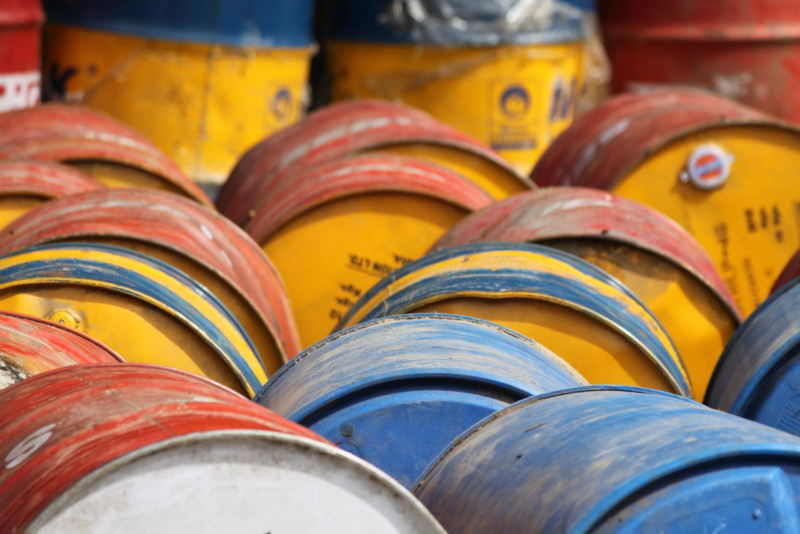Oil prices continued their slide last week, marking the fourth straight week of declines: On Thursday, prices hit their lowest since early July. Gas prices have followed suit, with the statewide average in Texas hovering around $2.80 per gallon.
But eyes will be on OPEC next weekend as they meet in Vienna and consider potential production cuts. Could prices climb once again?
Matt Smith, energy analyst for Kpler, joined the Standard for an update.
This transcript has been edited lightly for clarity:
Texas Standard: You know, I was thinking about our conversation just a couple of weeks ago about how prices at the pump in Texas had dropped below $3 a gallon for the first time since March. But now you got this further $5 drop in oil prices per barrel – and that’s just been in two weeks. Does that mean more good news for consumers at the pump?
Matt Smith: Yeah, absolutely. So oil is that key driver behind gasoline prices. And it’s also the seasonally weak time of the year, to boot, for gasoline. So there’s already that downward pressure on prices already.
So the kicker is that prices at the pump are still playing catch-up after the recent sell-off in oil, that $5 a barrel. So that means that although prices are down something like $0.20 in Texas from a month ago to $2.80 a gallon on the state average, they’ve got further to fall from here. So bringing you some good news there.
Happy days are here again – are we talking long term?
If long term is a few months ahead, then yes. I think as long as that oil price remains in check, which it should do, and given the seasonal weakness that we see for gasoline, we should see low prices carrying us through into at least early next year.
Well, you notice what’s happening with diesel prices: They’re dropping, too, but still a much higher price. Could you explain the differential there?
Yeah, sure. So Diesel essentially has a higher energy content, which means that you can get more miles out of a gallon of diesel than you do for gasoline. So that’s initially why it’s more expensive.
But secondly, the diesel market has been much tighter in the last year and a half simply because of the Russia-Ukraine conflict. So, you know, sanctions on Russian diesel exports have made diesel that much more scarce because Russia is one of the largest suppliers of diesel to the global market.
So diesel may have sold off by sort of $0.25 per gallon over the last month, but prices are still much more elevated than gasoline, nearly a dollar higher at $3.75 a gallon on a retail basis, for the Texas average, that is. So bear in mind, when gasoline hit a record of $5 a gallon in mid-last year, diesel peaked out at the same time, but at around $5.80 a gallon. So prices have dropped a couple of dollars, but still pretty, pretty strong there.
» GET MORE NEWS FROM AROUND THE STATE: Sign up for Texas Standard’s weekly newsletters
We should try to take a bit of a step back, though, if we can. When you have as much conflict and as much sort of geopolitical disruption as we have right now, seems to me a little counterintuitive that we’d see gas prices falling, even though, as you point out, this is the winter season and generally prices do go down.
Well, what it is is that even though what we’re seeing in Gaza is is horrific, right, from a human perspective, the reality is that it’s not a rich oil-producing area. So it’s close to the Middle East, but there isn’t oil specifically there being produced.
There was the uncertainty immediately once everything started there that caused prices to run up. But because of the realization that we’re not going to see some type of contagion to the broader region, we’ve seen that risk premium unwound. And that’s why prices are where they are now.
Let’s talk about the impact of this OPEC meeting coming up. Should we expect any announcements that might affect prices, from what you can tell?
Well, we’ll have to see how this week goes. You know, we’re starting off this week with crude prices rebounding a little bit, but we could expect one measure which could support prices, and that’s if Saudi Arabia extends its additional production cut of 1 million barrels a day. It’s had that in place since July of this year, and it’s carried it through since then. In fact, our best case is that the kingdom is going to keep that cut in place throughout the whole of next year just because the oil market is looking weak, particularly in the first quarter of next year.
Meanwhile, what about production along the Texas Gulf Coast and that sort of thing?
We’re at a record production in the U.S., so production has climbed to over 13 million barrels a day in the U.S. It’s likely to average around 1 million barrels a day higher this year than it did in 2022. And so even though we expect it to plateau going forward here, particularly with oil prices easing, the picture for the U.S. is uncharted territory.












